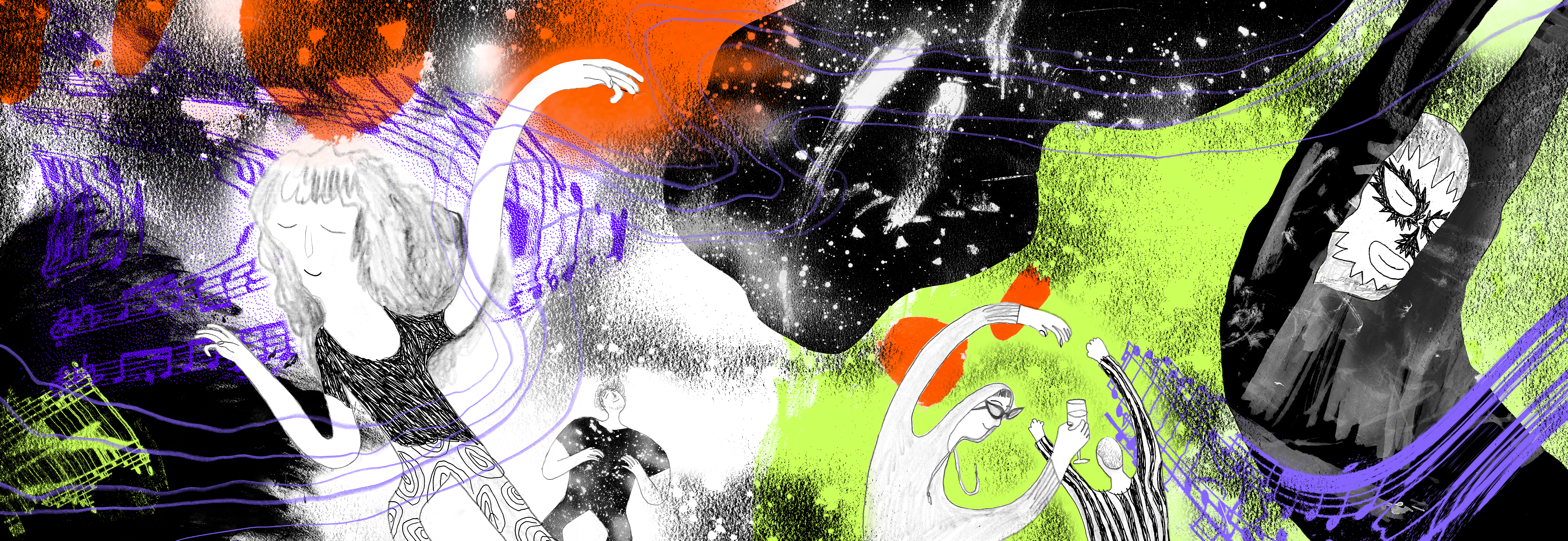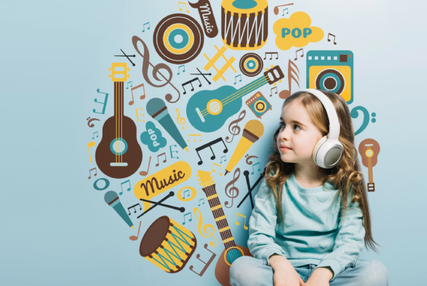Dans le cadre du SeineLab, laboratoire d’expérimentation autour du son et du numérique à La Seine Musicale, l’Ircam et le Département des Hauts-de-Seine présentent le dispositif interactif TACT, conçu par Zoé Aegerter et Romain Barthélémy.
TACT est une œuvre visuelle et sonore conçue par des collectifs d’artistes, qui propose aux visiteurs de devenir à la fois peintres et compositeurs le temps d’un voyage virtuel dans le paysage environnant. En touchant l’écran, seul ou à plusieurs, les joueurs déclenchent une transformation visuelle et sonore du dispositif et improvisent ainsi une partition ouverte spécialement conçue pour le lieu d’accueil du dispositif.
Projet TACT au SeineLab de La Seine Musicale avec les collégiens de Sèvres
Retrouvez les 3 épisodes du projet
Submersion, fruit d'une co-création pédagogique
L’artiste sonore Méryll Ampe et l’artiste visuelle Mona Hackel ont animé un cycle d’ateliers pédagogiques autour des liens qui unissent l’image et le son de novembre 2022 à janvier 2023 à La Seine Musicale. En interrogeant les élèves de la classe de 4ème 3 du Collège de Sèvres sur leur manière d’écouter la musique, en se concentrant sur ce qu’elle génère dans leurs corps et leurs rapports aux autres, les collégien·nes ont traduit par l’abstraction et la figuration l’effet des sons.
Quelles émotions nous traverse lorsque nous écoutons de la musique ? Comment les partager ? Qu’est-ce qui se passe dans l’expérience d’écoute collective ?
Lors de la première séance, les discussions ont porté sur les différents types de lieux d’écoute de musique, permettant ainsi aux élèves de faire part de leurs goûts et de témoigner de la place que la musique occupe dans leurs vies. Mona Hackel et Méryll Ampe ont fait part de leur univers musicaux et/ou graphiques en partageant leur travail et un certain nombre de références. Tout au long de l’atelier pédagogique, les élèves ont été invités à présenter individuellement un titre musical devant la classe, en explicitant les raisons de ce choix et en présentant le contexte de production du morceau choisi.
Une seconde séance s’est articulée autour de deux approches graphiques pour tenter de traduire visuellement la musique et les sons. À travers la figuration (représentation de la foule, de musiscien·nes, de scène de danse collective), puis de l’abstraction (jeu de textures, films d’animation qui synchronisent des formes graphiques avec une musique bruitiste, etc.) Mona Hackel a sensibilisé les élèves aux multiples façons de représenter la musique par le dessin. Soucieuse de leur partager son regard artistique pluridisciplinaire, elle a partagé avec eux des clips musicaux, des courts-métrages d’animation, des peintures ou encore des fanzines.
Lors de la troisième et quatrième séance d’atelier, les élèves ont à leur tour produit des formes graphiques. D’abord de façon figurative (à travers le dessin de personnages) ; puis abstraites (en tachant d’illustrer des sons à partir de l’écoute d’extraits sonores). Ces dessins ont ensuite été mis en page et rassemblés dans une édition collective intitulée Écouter avec les yeux.
La dernière séance d’atelier a permis aux élèves d’assembler leur fanzine et d’en garder une trace en repartant chacun·e avec un exemplaire.
Mettre en valeur l'imagination des élèves
Certains éléments graphiques (personnages et textures) et sonores réalisés par les élèves ont été incorporés par Méryll Ampe et Mona Hackel à leur co-création intitulée Submersion, oeuvre commandée par le Département des Hauts-de Seine et Ircam Centre-Pompidou. Ce titre désigne à la fois le fait de submerger et le celui d'être submergé. La création audio-graphique Submersion fait directement écho à l’expression familière "sub" qui désigne les subwoofer, ces hauts-parleurs destinés à la reproduction des fréquences sonores les plus basses du spectre audio. L’un des enjeux de cette cocréation aura été de fabriquer un environnement sonore et visuel capable d’immerger les visiteurs dans l'univers de la fête libre et inclusive.

Du 13 avril au 30 septembre au Seinelab de la Seine musicale
Entrée libre de 12h à 19h ou 20h les soirs de concert






